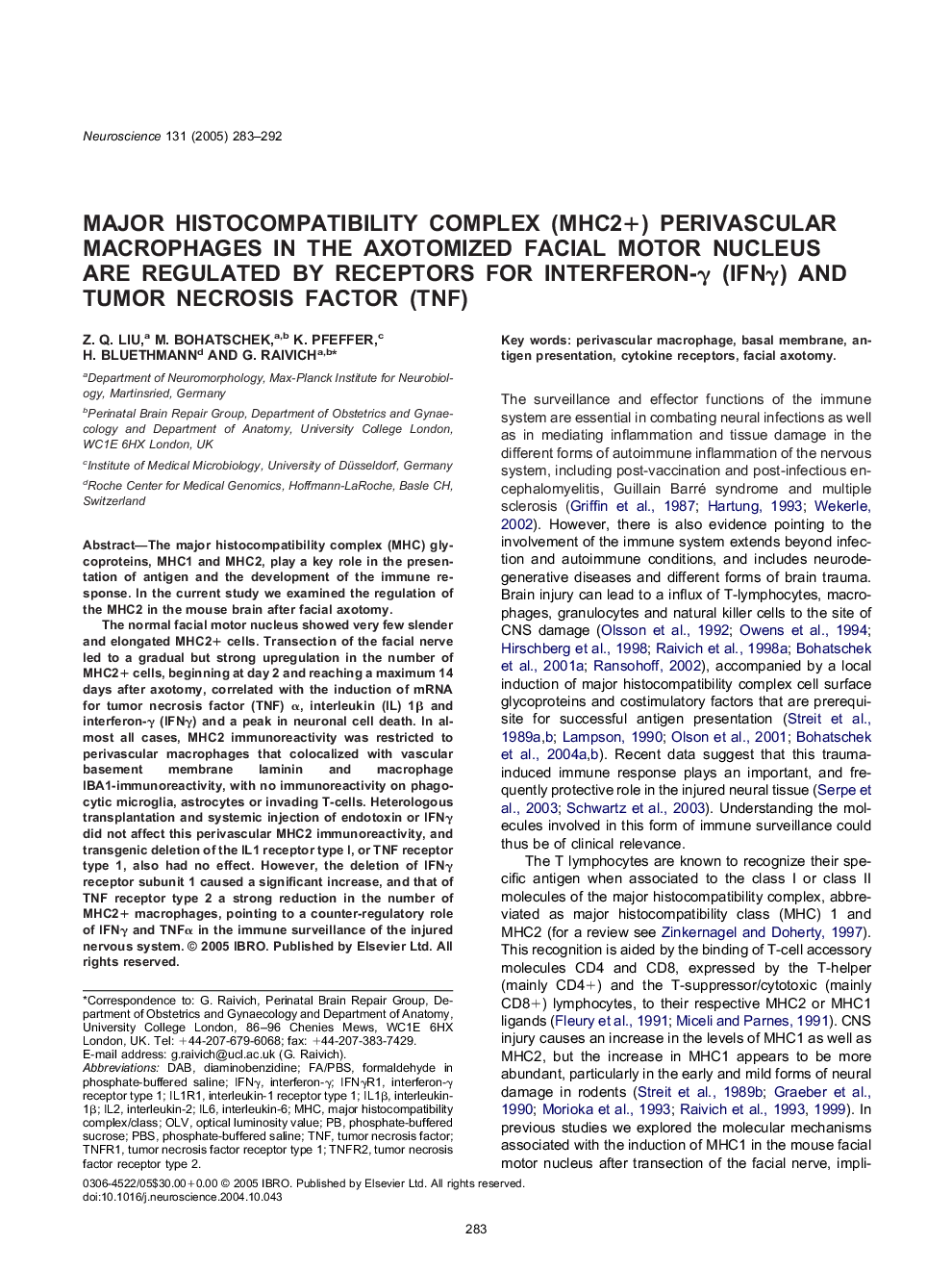| Article ID | Journal | Published Year | Pages | File Type |
|---|---|---|---|---|
| 9425587 | Neuroscience | 2005 | 10 Pages |
Abstract
The normal facial motor nucleus showed very few slender and elongated MHC2+ cells. Transection of the facial nerve led to a gradual but strong upregulation in the number of MHC2+ cells, beginning at day 2 and reaching a maximum 14 days after axotomy, correlated with the induction of mRNA for tumor necrosis factor (TNF) α, interleukin (IL) 1β and interferon-γ (IFNγ) and a peak in neuronal cell death. In almost all cases, MHC2 immunoreactivity was restricted to perivascular macrophages that colocalized with vascular basement membrane laminin and macrophage IBA1-immunoreactivity, with no immunoreactivity on phagocytic microglia, astrocytes or invading T-cells. Heterologous transplantation and systemic injection of endotoxin or IFNγ did not affect this perivascular MHC2 immunoreactivity, and transgenic deletion of the IL1 receptor type I, or TNF receptor type 1, also had no effect. However, the deletion of IFNγ receptor subunit 1 caused a significant increase, and that of TNF receptor type 2 a strong reduction in the number of MHC2+ macrophages, pointing to a counter-regulatory role of IFNγ and TNFα in the immune surveillance of the injured nervous system.
Keywords
Related Topics
Life Sciences
Neuroscience
Neuroscience (General)
Authors
Z.Q. Liu, M. Bohatschek, K. Pfeffer, H. Bluethmann, G. Raivich,
